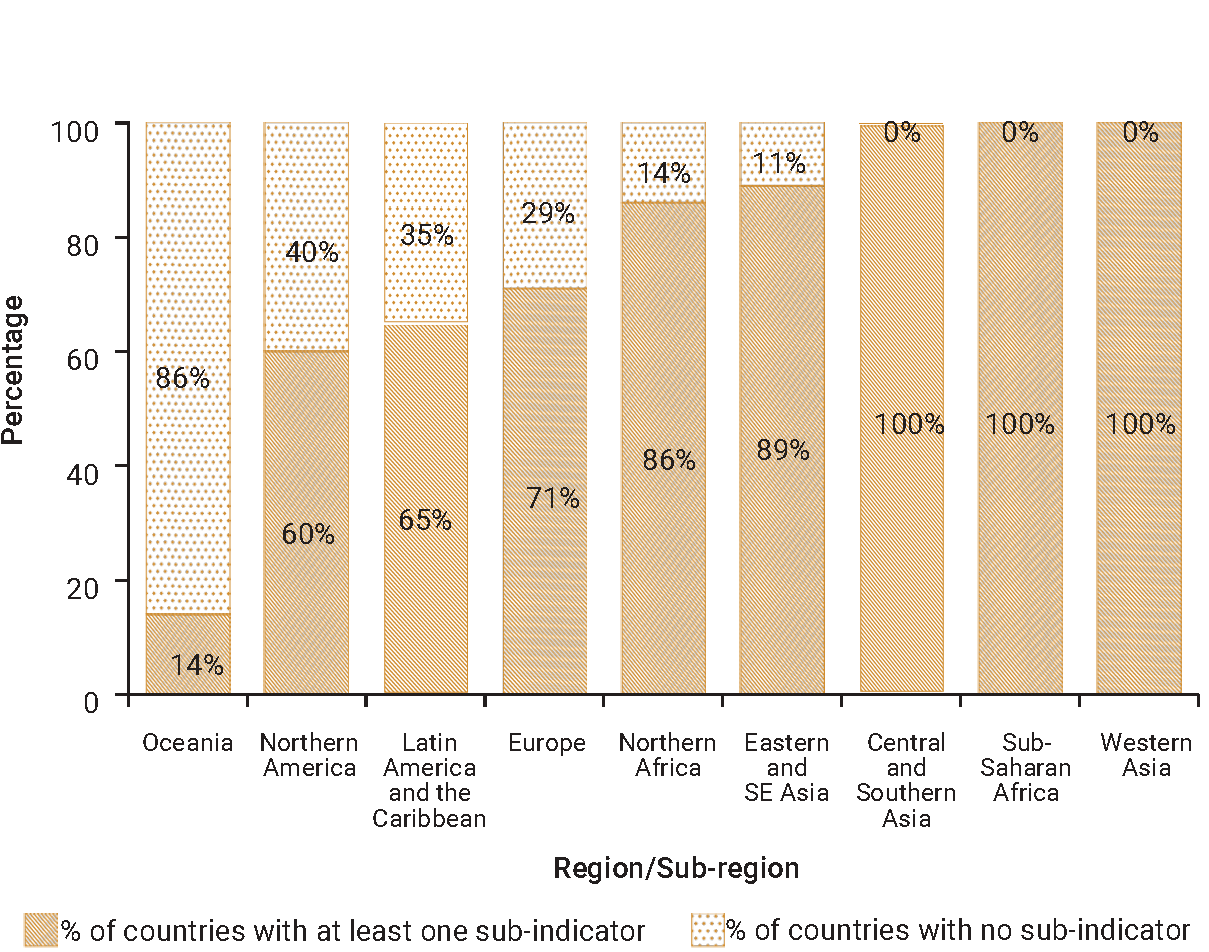SDG Indicator 6.4.1: Change in water-use efficiency over time[*])
1. Key features and metadata
Definition: This indicator tracks the value added in United States dollars per volume of water used in cubic meters, by a given economic activity over time. It considers water use by all economic activities, with a focus on agriculture, industry and the service sectors.
| Sub-indicator | Disaggregated by |
|---|---|
|
ER_H2O_WUEYST Water Use Efficiency (USD per cubic meter) |
Activity (industries, agriculture, services) |
Sources of information: Data on water use is provided by national line ministries and institutions (e.g. Water, Agriculture and Environment) and data on value generation in different sectors commonly originates from the National Statistical Office.
Related SDG Indicators: 6.4.2 (Level of water stress: freshwater withdrawal as a proportion of available freshwater resources), 6.1.1 (Proportion of population using safely managed drinking water services), 6.2.1 (Proportion of population using (a) safely managed sanitation services and (b) a hand-washing facility with soap and water), 6.3.1 (Proportion of domestic and industrial wastewater flows safely treated), 6.3.2 (Proportion of bodies of water with good ambient water quality), 6.5.1 (Degree of integrated water resources management implementation), and 6.5.2 (Proportion of transboundary basin area with an operational arrangement for water cooperation).
2. Data availability by region, SDG Global Database, as of 02 July 2025

3. Proposed disaggregation, links to policymaking and its impact
|
Proposed disaggregation |
Link to policymaking |
Impact |
|
Water use efficiency at the national level, by economic sector(USD per cubic meter)(UN 2008a; UNESCO and UNSD 2011;UN n.d.a):
Applies to:
|
This disaggregation highlights the sectors where progress has been made to improve the use of water and those not improving. It gives further insight into the dynamic of each sector and relevant information for implementing remedial policies, incentives and actions to improve water use efficiency tailored to each sector. It is particularly relevant for identifying the sectors that are most ineffective in using water as well as activities that are highly water-dependent for developing their business and at risk of being constrained by water shortages. Water-use efficiency policy requires the setting up of effective, coordinated policy that embraces all water users associated with an inclusive water governance framework. It contributes to the UN Water Action Decade(UNGA 2017b) and the SDG 6 Global Acceleration Framework(UN-Water 2020). |
The industrial sector has realized the largest water use efficiency performance over the past decade as a result of significant improvements in energy generation, industrial processes and heating. However, agriculture and the service sectors are still water-dependent(Food and Agriculture Organization [FAO] and United Nations Water [UN-Water] 2021a). In countries facing a serious water deficit, increasing water use efficiency in all sectors is essential to prevent it from becoming a major constraint to socio-economic and ecological activities. Meanwhile, climate change is aggravating the pressures on the water resources in all areas(UN 2022a).Enhancing water use efficiency in agriculture (the largest water using sector, where water productivity gains would yield substantial results) will require more efficient irrigation and better agricultural management practices. |
|
Water use efficiency at the river basin level and by main categories of economic sector (USD per cubic meter)(UN 2008a; UNESCO and UNSD 2011; UN Global Compact 2014; International Network of Basin Organizations [INBO] n.d.; UN n.d.a):
Applies to:
|
The impacts of poor water quantity management and water shortages are primarily felt locally. Water is also managed locally. Data at the river basin level – considering the hydrological, environmental and socio-economic features of the basin and the specificities of water withdrawal facilities and utilizations (e.g. types of water production and use processes, related technologies and upstream and downstream interactions) – is a better fit for addressing multidimensional water management issues(UNESCO 2009a). This disaggregation provides relevant sub-national data and can support informed decision-making to monitor water quantity and improve water management measures. It is also pertinent to transboundary waters, where efforts toassess and manage water quantity and quality should be coordinated (UNEP 2024a). It contributes to the UN Water Action Decade (UNGA 2017b) and the SDG 6 Global Acceleration Framework (UN-Water 2020). |
The concrete effects of water scarcity (e.g. competition for water use, impacts of droughts on food production or energy generation or a shortage of resources for households or manufactures) vary depending on the communities and water policies in place. Enhancing water use efficiency at the river basin level requires strong coordination and close collaboration through Integrated Water Resources Management (IWRM) tools (UNEP 2024a; UN n.d.b). IWRM offers local stakeholders the opportunity to be involved in water management strategic decisions and development plans and to foster democratic processes regarding the administration of water affairs. Decisions taken at the river basin level to increase water use efficiency can lead to the release of water resources for other uses that are in need or are more beneficial for the population of the river basin (e.g. disadvantaged communities), including the ecological needs (Eflows) that should be considered(European Commission [EC] 2015). |
[*]The proposed disaggregation of this indicator was not endorsed by FAO, the custodian agency for this indicator.

